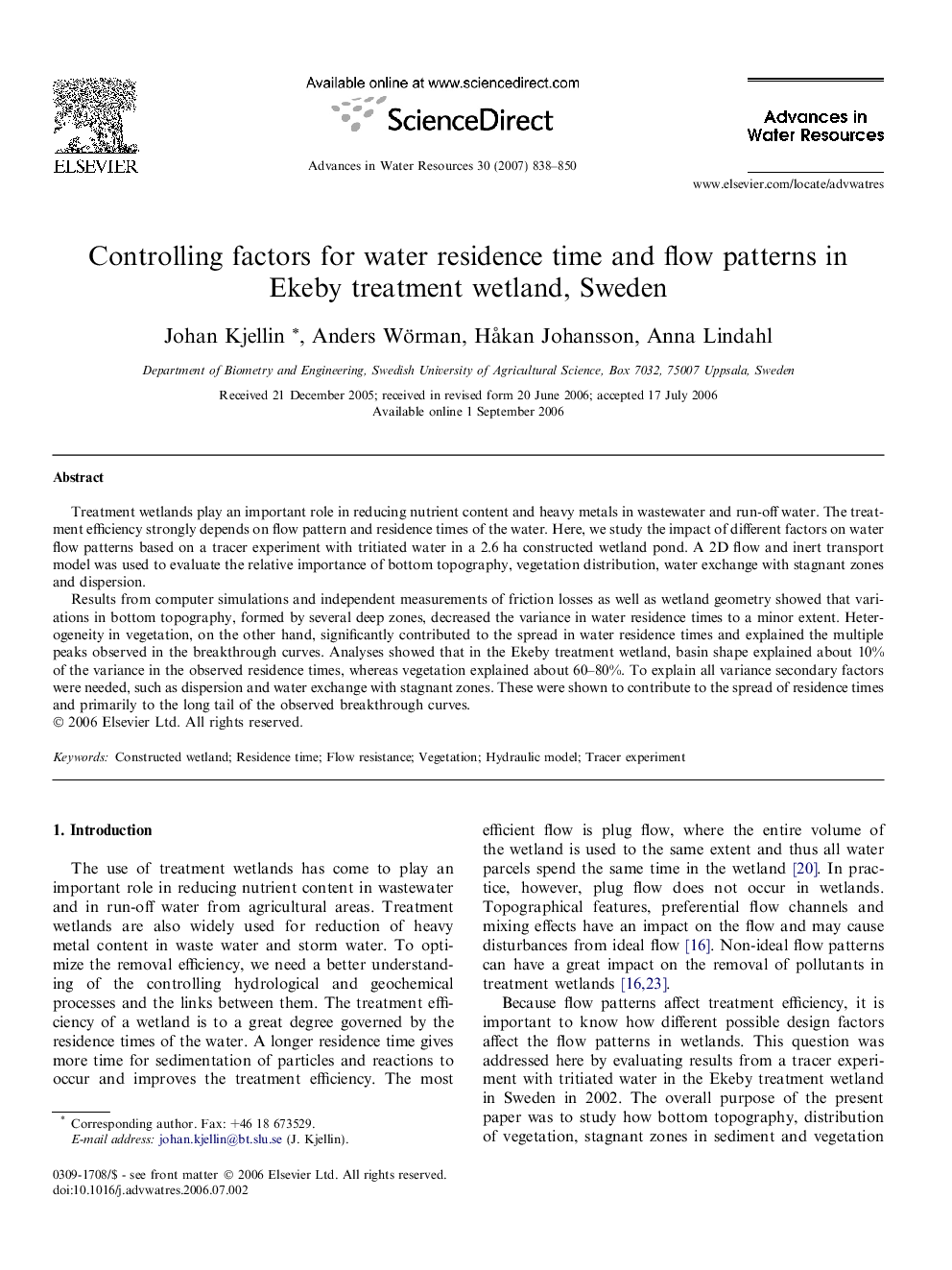| Article ID | Journal | Published Year | Pages | File Type |
|---|---|---|---|---|
| 4526786 | Advances in Water Resources | 2007 | 13 Pages |
Treatment wetlands play an important role in reducing nutrient content and heavy metals in wastewater and run-off water. The treatment efficiency strongly depends on flow pattern and residence times of the water. Here, we study the impact of different factors on water flow patterns based on a tracer experiment with tritiated water in a 2.6 ha constructed wetland pond. A 2D flow and inert transport model was used to evaluate the relative importance of bottom topography, vegetation distribution, water exchange with stagnant zones and dispersion.Results from computer simulations and independent measurements of friction losses as well as wetland geometry showed that variations in bottom topography, formed by several deep zones, decreased the variance in water residence times to a minor extent. Heterogeneity in vegetation, on the other hand, significantly contributed to the spread in water residence times and explained the multiple peaks observed in the breakthrough curves. Analyses showed that in the Ekeby treatment wetland, basin shape explained about 10% of the variance in the observed residence times, whereas vegetation explained about 60–80%. To explain all variance secondary factors were needed, such as dispersion and water exchange with stagnant zones. These were shown to contribute to the spread of residence times and primarily to the long tail of the observed breakthrough curves.
